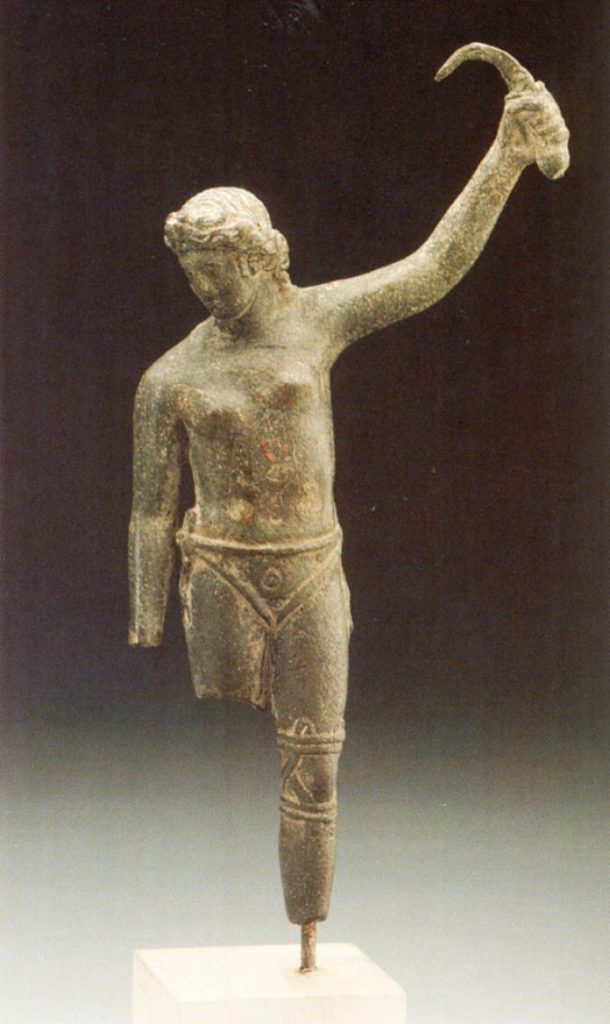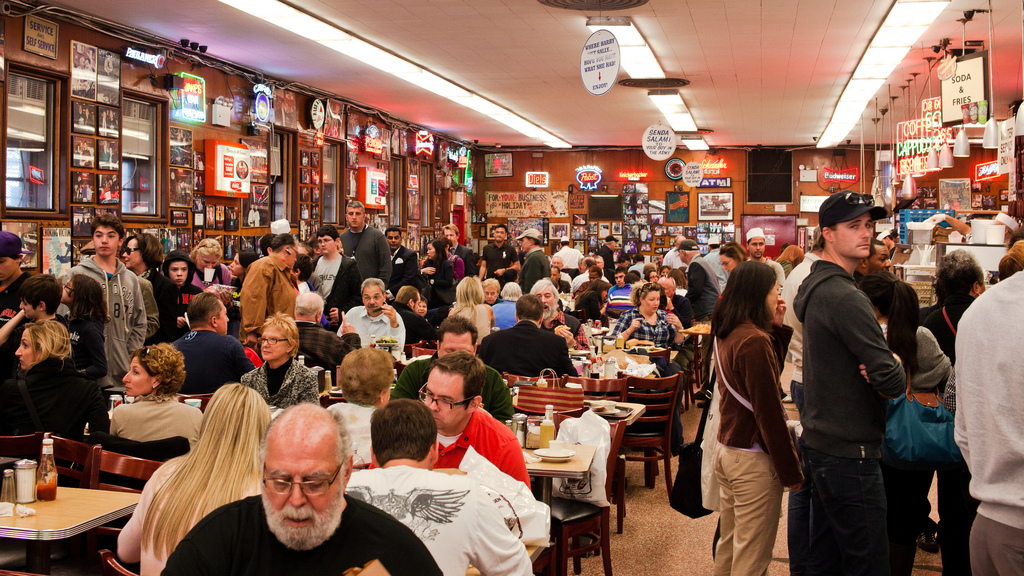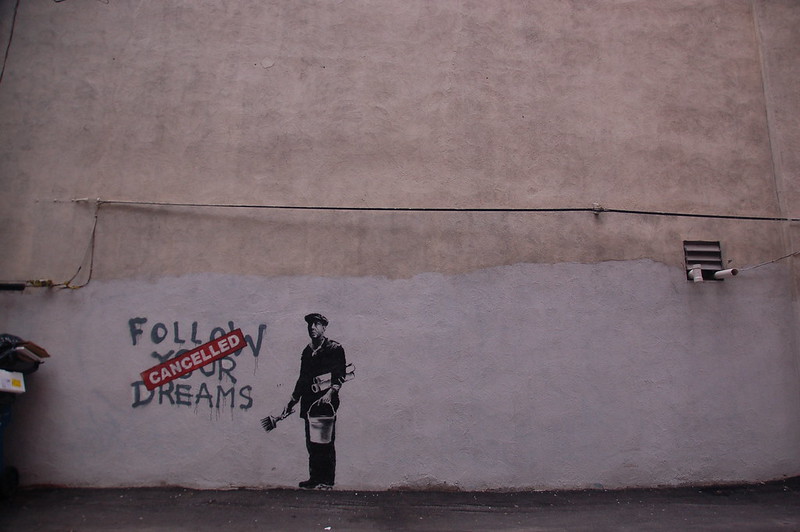3 Privacy and Publics
Online norms around privacy are dynamic, and stakes are high.
When you use social media, who are you communicating with? And who else is paying attention? This chapter is about producing, consuming, and controlling online content. It’s also about the data, cultural norms, and terms of service that you create, accept, and influence.
Not “the public” – They’re publics, and they’re networked
Let’s go back to that ampitheater in Chapter 2. We envisioned an athlete on the ground, spewing insults about her opponent. (Yes, there were women athletes and gladiators in Ancient Rome.) I imagine the athlete shouting, “I say before the public that my opponent has the stench of a lowlife latrine!” And we have a mass of spectators roaring in approval, disapproval, excitement, laughter.

That mass of spectators is a public. The definition of a public is complicated (see danah boyd, It’s Complicated pp 8-9). But for simplicity’s sake I define a public as “people paying sustained attention to the same thing at the same time.”
When the gladiator calls the mass of spectators “the public” it deepens the effect of her insult to suggest that “everyone in the world” is watching. Although it is imaginary, “the public” is a powerful idea or “construct” that people refer to when they want to add emphasis to the effects of one-to-many speech. But really, there is no “the public.” There is never a moment when everyone in the world is paying sustained attention to the same thing at the same time. There only are various publics, overlapping each other, with one person potentially sharing in or with many different publics.
If you use social media, you interact with many publics that are connected to one another through you and likely through many others. Publics that intersect and connect online are “networked publics” (pg. 8.) In the terminology of social network analysis, whenever an individual connects two networked publics (or any two entities, such as two other people), that connector is called a bridge. Think about the publics you form a bridge between. How are you uniquely placed to spread information across multiple publics by forming bridges between and among them?
Bridging information between publics can be exciting, and controversial. Networked publics really work each other up, forming opinions, practices, and norms together. And they occasionally get in fights in the stands, clubbing each other with ancient Roman hot dogs and Syrian tabouleh.
Different Cultural Publics
Student Content, Fall 2020
Social Media Based on Culture
I was born in Chile and recently just moved to the United States five years ago. Being from somewhere else really expands your knowledge on everything since you are surrounded by specific communities.
I have had the amazing experience of being able to understand and put myself in someone else’s shoes when it comes to social media. The fact that I am foreign gives me the opportunity to look at social media in a different way. What really surprised me when I moved to the United States is that people here were more attached to their phones and their Instagram pages, or Snapchat or other apps.
I grew up with people posting things on their social media that were simple and showed what their real interests were. Now individuals spend hours and hours checking what they are going to post, concerned about what others will say instead of just being themselves.
Something else that I have noticed about social media here is that cyberbullying is a much bigger thing than in a Hispanic country. That is the reason why people worry too much about what they are posting and what others will think of them when they see who they really are and what their real interests are. However, people should not be afraid of what others say and then they would have a better experience when it comes to technology. People could see all your real talents and maybe one day you could be recognized for that.
Even though people have different backgrounds and perspectives on things when it comes to life and publishing it on social media, at the end of the day we are all trying to show others who we are.

About the Author
Sofia Diaz is a first year student at the University of Arizona. She spends her time walking and napping with her beloved dog, Boss.
Privacy Norms in Online Publics
It is important to understand networked publics because they help us understand that the dichotomy of private vs public is an oversimplification of social relationships. When you post on social media, even if you post “publicly,” you probably envision certain people or publics as your audience.
Controlling the privacy of social media posts is much more complex than controlling the privacy of offline communication.
- On social media, as boyd notes, what you post is public by default, private by design (It’s Complicated, p. 61).
- Face-to-face, you can generally see who is paying attention and choose whether to speak to them, making your communications private by default, public by design. Note this is flipped from how it is on social media.
While popular media claim younger generations do not care about privacy, there is a great deal of evidence that youth care a lot about privacy and are developing norms to strategically protect it. Norms take time. There are norms that societies have developed over many centuries of face-to-face communication. These offline norms have long helped members of these societies get along with each other, and negotiate and protect their privacy. Let’s study one of these offline norms: civil inattention.
Civil inattention
It’s time to imagine an awkward face-to-face scenario, together. You’re in an eatery, which is bustling with people. You’re engaged in a conversation with two friends – and suddenly a passing stranger stops to lean over you and tries to join in your conversation. Another person from the next table over is also blatantly staring at you and your friends talking. You weren’t even talking to these people, and now they’re in your business!

That scenario is unlikely to happen in real life, because of a social norm sociologist Erving Goffman named civil inattention. In crowded spaces, civil inattention is the common understanding – by you and by others in that society – that you don’t get in other people’s business. You may acknowledge that you are sharing the space with them through small interactions, such as holding the door for the person behind you, making eye contact, and nodding or smiling. But you don’t stare, or listen in, or join in without an invitation.
So is civil inattention also an online norm? Well, that may depend on who we are and which publics we interact with online.
The online world is young, and norms in our networked publics are still being decided. Online norms are also dynamic, which means they are based on a changing set of deciders, including software developers and evolving publics of users. It could be that the most effective forms of privacy protection online will be based on social and cultural norms as we develop these.
But once we figure out what works in the online world in terms of privacy, we will have to articulate it – and then fight for it, because our data is immensely profitable for developers of the platforms we use.
Navigating the ties and threats of networked publics
Student Content, Fall 2020
Ibrahim Sadi’s Story
My knowledge and understanding of social media are much more different than a lot of people I know and my friends. Growing up as a kid I always wanted to have a social media platform, but when you get older you realize the beneficial things and negative things that could happen to yourself being on social media. For a younger kid like I was, I had Facebook at a young age, I’m sure many kids did as well. Being an Arab and coming from Jordan makes me much different than most people I know, especially on social media.
There have been times on social media, people have tried to put me down for being Arab or making disrespectful comments to me on a social media platform as well. People do this because they think they’re funny but the person being made fun of is being bullied, it’s hard sticking up for yourself when 20 other kids are laughing at you, and you’re the only person that you have. The good for me on social media was talking with my family, sharing cool memories with good friends, and getting jobs off social media as well!
What makes social media unique for me is the interests I have and bringing my family more business as well. My family has a local business and during a time like this, it’s very hard to make money as a local owner because of the business loss during COVID. Without having social media, I wouldn’t have been able to get extra customers to help support my Fathers local business, I wouldn’t have been able to get more people to apply to father business either. The interests I have for social media could be all kinds of things, like watching UFC which is my favorite hobby to do when I have nothing better to do. Learning cool recipes to cook for my family and me, watching all kinds of national sports like football, basketball, and soccer.
Another reason why using social media so unique for me is because of Job opportunities, without social media I wouldn’t have the job I have today. Being able to “share”-this is my GL it wouldn’t work by trying to make it a GL term. your interest in jobs and share your thoughts through social media to your friends and family is also why social media so unique Job opportunities are so important for our generation especially because everything nowadays is almost based on technology. For example, students right now are going through a pandemic we have never been in and we are using the app “zoom” to do basic home school.
About the Author
Ibrahim Sadi is a second year student at the University of Arizona.
When publics fixate, attack, troll, and bully
The term cyberbullying received a great deal of attention as the internet reached widespread adoption, and it is entangled moral panics that caused and used it. As parents and educators in the early 2000s struggled to recognize the longstanding issue of bullying in online discourse, they sometimes conflated bullying with all online interaction. Meanwhile, many of the cases the media labeled cyberbullying are not actually bullying, which is a real phenomenon with specific criteria: aggressive behavior, imbalance of power, repeated over time. (These criteria were laid out by Swedish psychologist Dan Owleus; an excellent analysis of cyberbullying in the context of these is in boyd’s fifth chapter of It’s Complicated.)
Still, some online interactions are toxic with cruelty, whether or not we can scientifically see them as bullying. Another term in popular use to describe online attacks is trolling, perhaps derived from the frequent placement of trolls’ comments below the content, like fairytale trolls lurking below bridges.
- Individuals troll. Some seem to lash out individually from personal loneliness or trauma, as with a Twitter troll to whom celebrity Sarah Silverman recently responded with surprising compassion.
- Mobs also troll. A distinctly frightening modern scourge is when critical networked publics and trolls attack in a coordinated effort, or mob. More visible examples of online troll mobs include hateful vitriol directed at a 13-year-old musician’s Youtube explorations, at a black actress in a sequel to a white male film, and at a columnist who is proud to call herself fat – but trolls attack less visible people incessantly as well.
- Not all are affected equally by trolling. While attacks do plague some men online – and specifically men of color – online hatred is directed more often and more viciously at women. Women of color are particularly vulnerable. Many online spaces with widespread usership such as Reddit have cultures of sexism and bigotry – and while there is evidence of efforts to combat toxic online cultures, many of these sites have a long way to go.
John Suler wrote in the early days of the internet about the online disinhibition effect, exploring the psychology behind behaviors that people engage in online but not in person; he noted while some disinhibition is benign, much of it is toxic. More recent research connects online trolling to narcissism. As we perform before online publics, we enter an arena of unleashed and invisible audiences.
Why privacy is such a tangled issue online
Privacy is a notion relating to self-determination that is too complicated to be reduced to one simple idea. Privacy can be defined in many ways – and so can invasion of privacy and its potential consequences. This is one of the reasons software companies’ Terms of Service or TOS are never adequate protections for users of their services. How do we demand protection of privacy when it is so multilayered and impossible to define?
Consider these two passages by Daniel Solove in his article, “Why Privacy Matters Even if you have Nothing to Hide.”
Privacy… is too complex a concept to be reduced to a singular essence. It is a plurality of different things that do not share any one element but nevertheless bear a resemblance to one another. For example, privacy can be invaded by the disclosure of your deepest secrets. It might also be invaded if you’re watched by a peeping Tom, even if no secrets are ever revealed.
Privacy, in other words, involves so many things that it is impossible to reduce them all to one simple idea. And we need not do so.
I agree with Solove that privacy is too complicated to be reduced to one simple idea. But often we are still called on to present a simplified definition of our privacy – for example, we have to justify why it is wrong to give companies such rampant uses of our data.
Case Study: Observation, Awareness, and fear
Student Content
Samantha Clayton’s Social Media Experience
Social media has become a very popular place that people go on for a variety of reasons. Whether it be a reason to go on for the latest gossip, daily news, to post your fresh new haircut, a good laugh, or even to get up to date on the latest trends. Although, in my opinion, I’m terrified of social media and I really don’t believe a lot of people are. When I first joined the world of social media, I was endlessly tweeting random ideas I had, silly pictures of my friends, and too many memes. Even though I wasn’t tweeting anything to personally attack or offend anyone I had learned, the more I used social media, and the older I got, it’s a huge risk to be active on a social media account nowadays. People will find absolutely anything to be offended by and you will never hear the end of it if you do offend someone in any possible way.
I like to call myself an observer. I hardly post on social media, but I actively use it. I don’t necessarily like, share someone’s post, retweet, comment, etc. on any posts on social media platform, I just sit back and watch. I feel as if it’s better that way because people are constantly looking for a fight on social media. I can’t lie, I do post on social media but it’s a rare occurrence when I do. What I do post and what I only will post is photos of me/friends/family with no caption or an emoji as a caption and use my platform to spread awareness or touch base on something serious like the Black Lives Matter Movement, justice for George Floyd, Breonna Taylor, and the other Black lives that have been taken away by the police.
My perspective on social media is literal fear. People I don’t even know are in my direct messages constantly. It ranges from people saying they know where I live (basically blackmail), old men asking me to have sex with them for money, and hackers trying to get me to share my passwords. These occurrences have also made me afraid to post on social media, but the block button has been my best friend and has solved a lot of these problems I have faced on social media. I’m not sure if any other women, or even men have experienced this issue or if the people attacking me in my direct messages are even real. I like to think it’s just a robot of some sort but I’m still reading those scary words when I go on any of my social media accounts. (It mostly happens on Instagram). Social media should never have to be a place where people are afraid to go on to speak their mind (only if it isn’t offensive or bullying), be able to share photos without having some predator after you, etc. Hence exactly why I like to call myself an observer due to the many problems I have faced just by going on different social media apps.
About the Author
Samantha Clayton is a sister, future teacher, activist, women’s rights advocate, and she loves cats!
Respond to this case study…This writer’s fears are grounded in personal, challenging experiences online. What does a case like this illustrate about the potential consequences of social media use? What are ways to control or resist the negative outcomes this writer has experienced, beyond not posting?
The value of human data

We are learning the hard way that we must fight for our privacy online. As an early leader in the social media platform market, Facebook set very poor standards for the protection of user privacy because access to personally identifiable user data was immensely profitable for the company. Before Facebook, it was standard for users of online sites to use avatars and craft usernames that didn’t connect to details of their offline lives.
Still, countless online sites permit or encourage users to create online identities apart from their face-to-face identities. Many of today’s younger internet users choose platforms with higher standards for privacy, limiting the publics that their posts reach and the periods of time that posts last. Youth frequently have “finsta” accounts – “fake” Instagrams that they share with nosy family and acquaintances, while only good friends and in-the-know publics have access to their “real” Instagrams. Practices like these force developers to offer users more control over user privacy and the reach of their posts, at the risk of losing users to competitors.
Users shape platforms and platforms shape user behavior. And social and cultural norms shape both user behavior and software platforms.
Core Concepts and Questions
Core Concepts
people paying sustained attention to the same thing at the same time
a construct; an idea of “everyone, everywhere” that people imagine, and refer to when they want to add emphasis to the effects of one-to-many speech
these are sets of people paying sustained attention to the same thing at the same time that intersect and connect online
In the terminology of social network analysis, whenever an individual connects two networked publics (or any two entities, such as two other people), that connector is called a bridge
public by default, private by design and private by default, public by design
the first is a phrase used by danah boyd to emphasize the work required to control the privacy of social media posts – the opposite of face to face communication, which is private by default, public by design. (It’s Complicated, p. 61)
the common understanding in crowded spaces that you don’t may politely acknowledge others, but you do not get in their business
a term entangled in moral panics that caused and used it as parents and educators in the early 2000s struggled to recognize the longstanding issue of bullying in online discourse
a real phenomenon with specific criteria: aggressive behavior, imbalance of power, repeated over time. Defined by Dan Olweus
the psychological theory that people behave online in ways they would not in person. For more information see Suler, J. (2004). The Online Disinhibition Effect. Cyberpsychology & behavior : the impact of the Internet, multimedia and virtual reality on behavior and society, 7 3, 321-6
based on a changing set of deciders, including software developers and the evolving practices of publics of users
a notion relating to self-determination that is too complicated to be reduced to one simple idea
a collective attack built upon the practice of using social media to call people out for perceived wrongs
Core Questions
A. Questions for qualitative thought
- Consider at least one recent post you wrote on the last three social media platforms you used. What publics were you intending to reach with those posts? What language use, visual displays, and other strategies did you use to gain the attention of those publics? If you were facing those publics face to face, how might your self-presentation have differed?
- Consider something you have seen online that did not seem to be intended for you in particular to see it. What factors were responsible for its visibility to you? Then consider something you have posted on social media that was seen or commented on by someone you did not have in mind as its audience. How did that situation resolve, and what lessons did you learn from it?
- Imagine you are one of the people in charge of a new online world. Your job is to define the communication norms and policies for everyone invited into that world. Which are the key norms you implement? And how do you present them to people so that they will follow them?
B. Review: Which is the best answer?
Related Content
Media Attributions
- A female gladiator performing for one or more publics in Ancient Rome © Anonyme (IIIe siècle ap J.-C.) is licensed under a Public Domain license
- SD_image-5fd12359ea131 © Sofia Diaz adapted by Emily Gammons is licensed under a CC BY (Attribution) license
- A crowd of people at Katz’s Deli in New York City. © Matt Bidulph is licensed under a CC BY-SA (Attribution ShareAlike) license
- ivoices_logo_2020
- SC_image-5fd1b098aa4ce © Samantha Clayton adapted by Randi Baltzer is licensed under a CC BY (Attribution) license
- Data mining © Mathematical Association of America is licensed under a CC BY-ND (Attribution NoDerivatives) license
- banksy_follow_your_dreams_cancelled © Chris Devers; Banksy is licensed under a CC BY-NC-ND (Attribution NonCommercial NoDerivatives) license
people paying sustained attention to the same thing at the same time
a construct; an idea of "everyone, everywhere" that people imagine, and refer to when they want to add emphasis to the effects of one-to-many speech
a term danah boyd uses in her book It's Complicated, these are sets of people paying sustained attention to the same thing at the same time that intersect and connect online
In the terminology of social network analysis, whenever an individual connects two networked publics (or any two entities, such as two other people), that connector is called a bridge.
a phrase used by danah boyd to emphasize the work required to controlling the privacy of social media posts - the opposite of face to face communication, which is private by default, public by design. (It's Complicated, p. 61.)
Sociologist Erving Goffman's term for the common understanding in crowded spaces that you don’t may politely acknowledge others, but you do not get in their business
a term entangled in moral panics that caused and used it as parents and educators in the early 2000s struggled to recognize the longstanding issue of bullying in online discourse
a real phenomenon with specific criteria: aggressive behavior, imbalance of power, repeated over time. Defined by Dan Olweus.
The psychology theory finding and predicting that people behave online in ways they would not in person. For more information see Suler, J. (2004). The Online Disinhibition Effect. Cyberpsychology & behavior : the impact of the Internet, multimedia and virtual reality on behavior and society, 7 3, 321-6 .
a notion relating to self-determination that is too complicated to be reduced to one simple idea
based on a changing set of deciders. An examples the way online norms are based on changing deciders including software developers and the evolving practices of publics of users.
a collective attack built upon the practice of using social media to call people out for perceived wrongs


